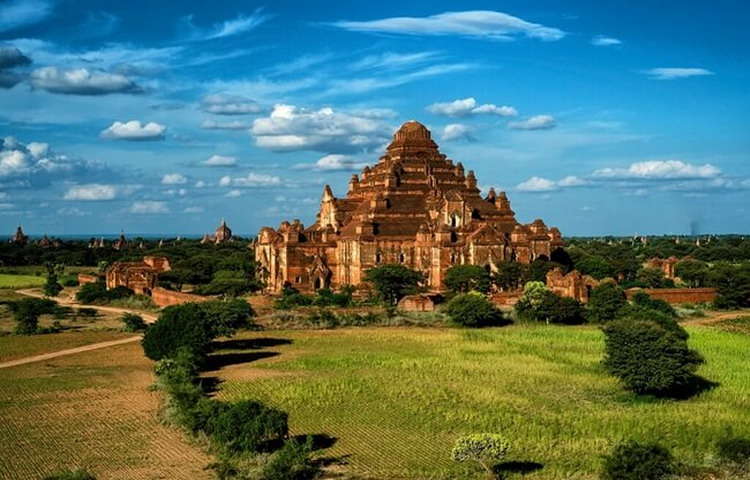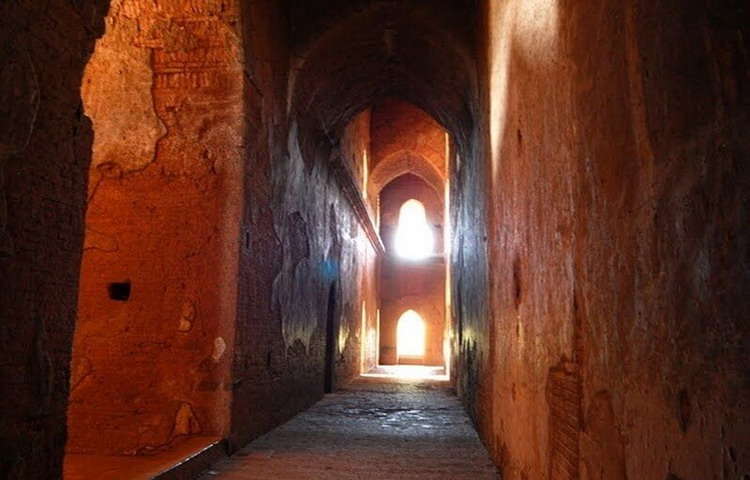Dhammayangyi Temple – the largest temple in Bagan
Dhammayangyi Temple, a nice place to visit for a Bagan travel, is the most massive structure among temples of Bagan which has a similar architectural plan to Ananda temple. It was built by King Narathu (1167-70) and located about a kilometer to the southeast of the city walls directing Minnanthu.

History of Dhammayangyi Temple
Legend has it, the temple was constructed by King Narathu to show his redemption for having killed his father, brother and wife to usurp the throne. However, he also was assassinated before the completion of the building. Because of the spine – chilling history of temple, the local call it “The Ghost Temple”.

Construction debris in the Dhammayangyi Temple’s interior
The Dhammayangyi Temple in Bagan City was never fully completed and the construction was probably halted right after the death of the King. Construction debris covered most of the interior of the temple including three of the four sanctums in the inner core.
The interior of the temple was covered with debris maybe due to the rough rules of Narathu or to prevent the ghost of King Narathu from leaving the temple.

Like other temples in Myanmar, the brick work of the Dhammayangyi Temple was completed with great precision. It is said that laborers would be killed or chopped off their hands if they did not complete the work perfectly.
Structure of Dhammayangyi Temple
The floor of temple is about 78 meters wide, but the centre is 25 meters long only and is connected to each other by a large corridor system with arches and fake-door system.

The excellent brick structure of Dhammayangyi Termple appearing in the arch system above the corridor surrounding the temple proves how skilfull the ancient people were. Each main door stands Buddha statues with different styles, shapes and colors. On the edge of the corridor, there are smaller images on many niches and pedestals.

In the past, Dhammayangyi featured a sikhara (a tower like structure of the North India architecture) on the top but it collapsed due to the effect of severe weather. The wall surrounding the temple grounds has huge arched gates that lead to the pagoda.


